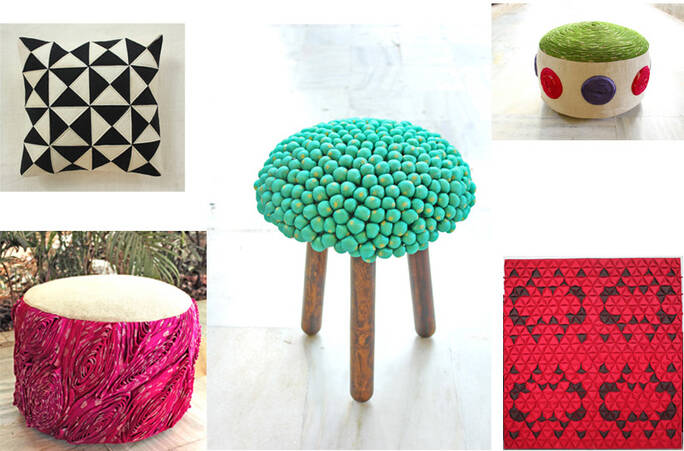Photographs: Avni Sejpal
- Fabric has the potential to be stitched, folded and stretched into three-dimensional forms. Use these inherent characteristics to create volumetric art pieces with textile. The third dimension is a breath of fresh air from what we are accustomed to seeing and it will surely fascinate the viewers.
- It is important that you do not hide the fabric behind unnecessary layers like a wrapped-up candy. Textile with its unique grains is tactile. Make sure that the product allows one to see and feel its textures.
- Keep the language universal. When using patterns, make sure they are gender-free. For instance, some men do not like intricate floral designs. But let this not stop you from using bold hues like pink. Use them with gusto and it will have an appeal of its own.
- Get inspired by everyday stuff like the bindi, or the manner in which Rajasthani men tie their turbans. Feel free to replicate these patterns and techniques on cushions and unusual stools.
- Make a statement with your grandmother’s saree. Reclaim an old saree with precious handiwork, frame it in a wooden frame and hang it up as wall art. Similarly, sandwich vintage textile between glass plates and place it on a wooden support to make for a unique centre table, or use it as shutters for your wardrobe.
- Want a wall to pop? Experiment with unusual materials. Felt is known for its acoustic qualities. Hand-mould felt into an artwork for your home theatre system, instead of simply pasting it as a panel. Coming to your rescue of keeping fabrics clean is felt coated with scotch guard, which can be easily spot vacuumed.
- Hang beautifully woven textile sheets in expansive spaces as a centre piece. These also double up as interactive, see-through partitions, easily rolled up to open up the space.
- Transform your bed headboard into an elaborate piece of woven colours, patterns and texture. It can be an intricately embroidered sheet stretched onto ply with cushioning, or a chequered visual of square panelled textile pieces put together in a delicate design. With a brightly hued headboard, leave the rest of the room toned down with neutral colours.
- Unlike the living room, bedrooms don't have too many accessories. So dress-up the bedding and cushions using prints and embroideries. Reflect your personality with cool greys and minimal stitching or over-the-top hues. But always strike a balance between the bed and the remaining elements.
- Protect textile art like you would any other art piece. Indian households need to be careful of not just outdoor dust but also the kitchen masalas in the air, so always place your textile art away from openings and kitchens.


















